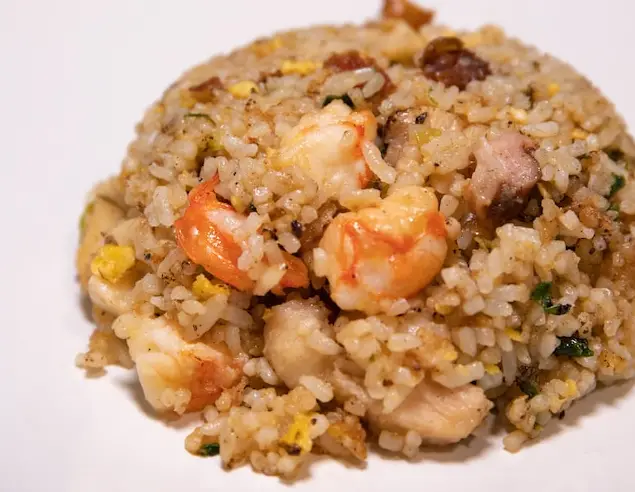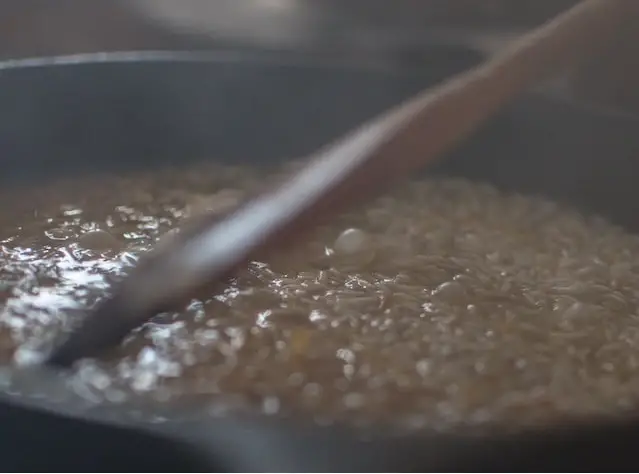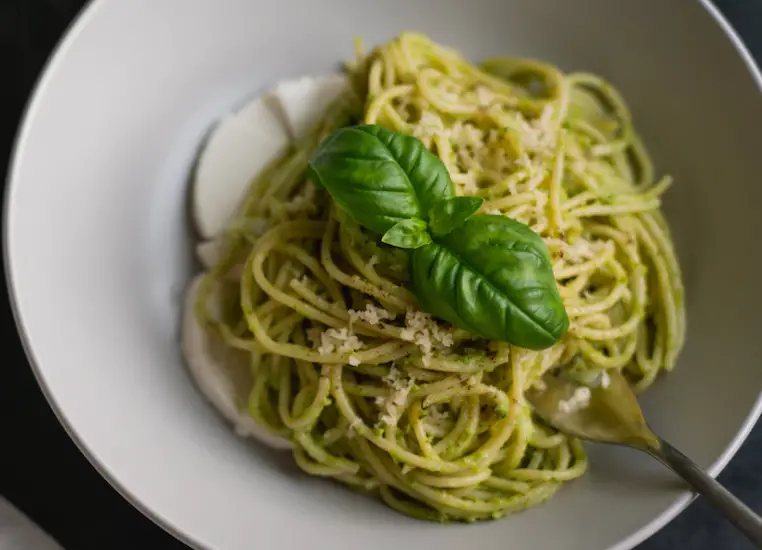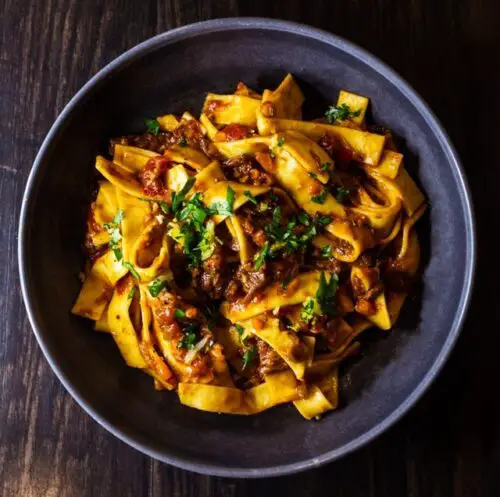I’ve always loved fried rice, but there’s a issue I face some times I try to make it: the rice turns out mushy and soggy. What am I doing wrong?
The most common cause of mushy or soggy fried rice is having too much moisture in it. This can arise from using overcooked rice, or freshly cooked rice. Additionally, adding an excessive amount of ingredients can introduce unwanted moisture, making the fried rice even more soggy.

Reasons Why Your Fried Rice Might Be Mushy
There are a few reasons why your fried rice might be mushy. Here are a few of the most common reasons:
- Using overcooked rice. When rice is overcooked, it loses its structure and becomes soft and mushy. To prevent this, make sure to cook the rice until it is just cooked through.
- Too much moisture. Another common reason why fried rice is mushy is because there is too much moisture in the dish. This can happen if you add too many ingredients with high water content to the fried rice.
- Not enough heat. You need your pan to be hot enough to evaporate all the excess moisture.
- Not stirring the rice enough. If you don’t stir the rice enough while it is cooking, it can become mushy. This is because the rice will stick together and not cook evenly. To prevent this, make sure to stir the rice constantly while it is cooking.
How to Prevent Fried Rice From Being Mushy
Here are a few tips for preventing your fried rice from becoming mushy:
- Use the right type of rice. The best type of rice for fried rice is short-grain rice. Short-grain rice has a high starch content, which helps to keep the rice separate and prevent it from becoming mushy.
- Cook the rice properly. Make sure to cook the rice until it is just cooked through. Overcooked rice will become mushy.
- Use day-old rice. Freshly cooked rice is too moist and will make your fried rice mushy
- Use a generous amount of oil. When stir-frying the rice, the oil will help to prevent the rice from sticking together.
- Stir the rice constantly. While stir-frying the rice, stir it constantly. This will help to prevent the rice from sticking together and becoming mushy.
Here are some additional tips for making perfect fried rice:
- Season the rice before you stir-fry it. This will help to enhance the flavor of the dish.
- Add a variety of vegetables and proteins to your fried rice. This will make it more nutritious and satisfying.
- Don’t overcrowd the pan. If you add too much food to the pan at once, the rice will steam instead of fry.
- Cook the fried rice over high heat. This will help to keep the rice crispy.
- Serve the fried rice immediately. Fried rice is best served hot and fresh.
How to Save Mushy Fried Rice: A Step-by-Step Guide
Before you think of discarding that rice, here’s how I’ve managed to salvage mine:
1. Choose the Right Oil
The key to reviving mushy fried rice lies in using the correct oil. Opt for an oil with a higher smoke point, such as canola, vegetable, or grapeseed oil. Unlike butter, which has a lower smoke point and can cause the rice to burn quickly, these oils allow you to fry the rice at higher temperatures, leading to a crisper outcome.
2. Ensure the Oil is Hot Enough
Before you reintroduce your mushy rice to the skillet, make sure the oil is sufficiently heated. A good indicator is when the rice starts to “snap” or “pop” upon contact with the oil. If your rice isn’t doing this, your oil isn’t hot enough. Adjust your heat accordingly and wait for the right moment.
3. Fry in Batches
One of the primary reasons for mushy fried rice is overcrowding the pan, which doesn’t allow the rice to fry evenly. To combat this, consider frying your rice in smaller batches. This gives each grain of rice ample space and contact with the skillet, promoting even frying and reducing mushiness.
4. Resist the Urge to Stir Continuously
If your goal is to achieve some crispiness, it’s crucial to resist the temptation to constantly stir the rice. Allow it to sit and cook undisturbed on medium-high heat. This will enable certain parts of the rice to get crispy, giving a texture that, while not entirely akin to traditional fried rice, is reminiscent of dishes like “risotto al salto”.
5. Adjust Your Expectations
While these techniques will significantly improve the texture of your fried rice, it’s essential to adjust expectations. The final product might not resemble the classic fried rice with distinct grains. However, with its own crispy places and unique texture, this “rescued” rice can be an enjoyable dish in its own right.





